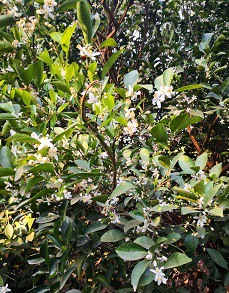 In the Letaba Valley of Limpopo the citrus harvest is done, but soft citrus and grapefruit orchards in the Letsitele area are in full flower, a critical period for irrigation.
In the Letaba Valley of Limpopo the citrus harvest is done, but soft citrus and grapefruit orchards in the Letsitele area are in full flower, a critical period for irrigation.
The Tzaneen Dam, an important irrigation dam for Letsitele, stands at a critical 10.4% (20% lower than last year this time). Summer rainfall over the water catchment areas of Tzaneen and Politsi has been below average.
Since the start of April Letsitele farmers have only had 30% of their water allocation, a water saving measure that is even more stringent than that suggested by the water affairs authorities but without which, says Jacques Kruger, CEO of the Letaba Water User’s Association, farmers would’ve run out of water three months ago already. “We evaluate the situation weekly but it is a difficult situation. This is a critical period of irrigation for farmers.”
A project to increase the storage capacity of the Tzaneen Dam started in 2017 with the demolition of the previous wall. Ten percent of the dam’s water was released to farmers to get the water level down to 60% in order for construction to proceed, but then the project came to a standstill.
The delays and uncertainty around the Tzaneen Dam project have been a source of continuing anxiety for farmers in the area. As one farmer, quoted in local media, put it at a recent meeting with government: "That dam is my bank and it is running empty, while my orchards are shrinking."
 Tzaneen Dam before construction work commenced (Photo: Department of Water & Sanitation)
Tzaneen Dam before construction work commenced (Photo: Department of Water & Sanitation)
Fortunately, the budget to resume work on the dam wall has just been approved, with construction to restart in January 2020 and scheduled to be completed by August 2021. The end goal is that the Tzaneen Dam’s capacity will be enlarged by 20%.
The drawback is that if the coming summer rain is plentiful, the dam under construction won’t fill up to capacity, putting a cap on the amount available for next season.
Farmers put expansion plans on hold
“It’s a tight and uncomfortable situation,” says a Letaba Valley berry farmer who’s had to restrict expansion plans and cull varieties sooner than was originally estimated. “If the dam can just get to 40% or 50% it would be a huge source of relief for us. It’s just gotta rain, that’s what we need.”
Many farmers have additional water sources like boreholes, apart from their storage dams on farms, keeping them afloat for the moment, but spring rains are sorely needed – but not expected for at least another month. It has been estimated that it would take four concurrent good years of rain to replenish the region's water table. Cooler temperatures have been predicted for the rest of the week over the country which comes as a relief after a very warm springtime.
“We’re okay for now but we try not to focus on the drought too much, we rather focus on what we have control over,” a Letsitele citrus and vegetable farmer tells FreshPlaza
